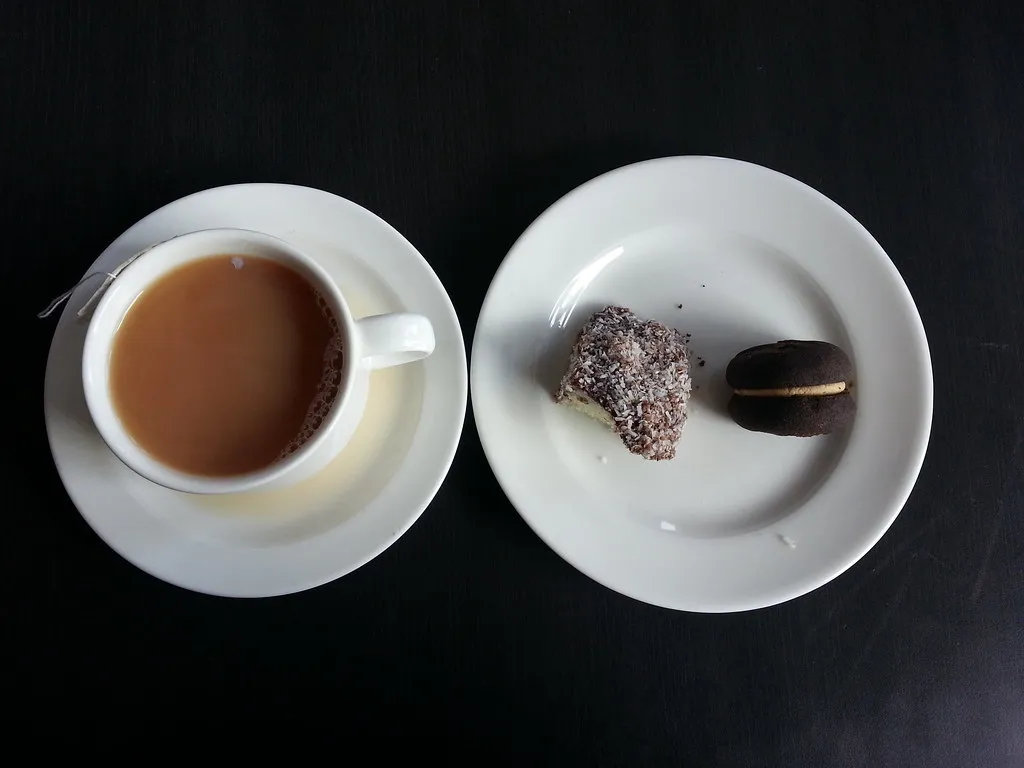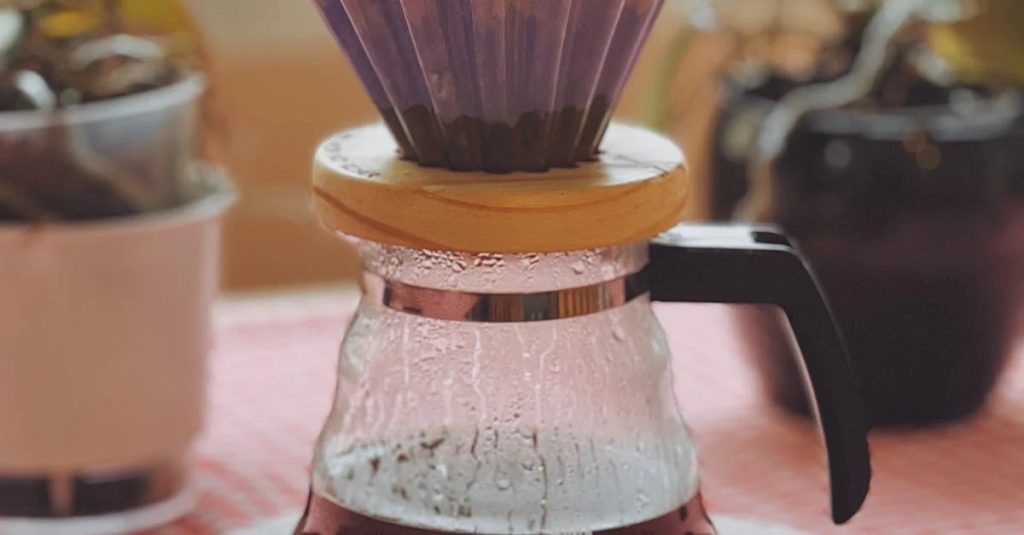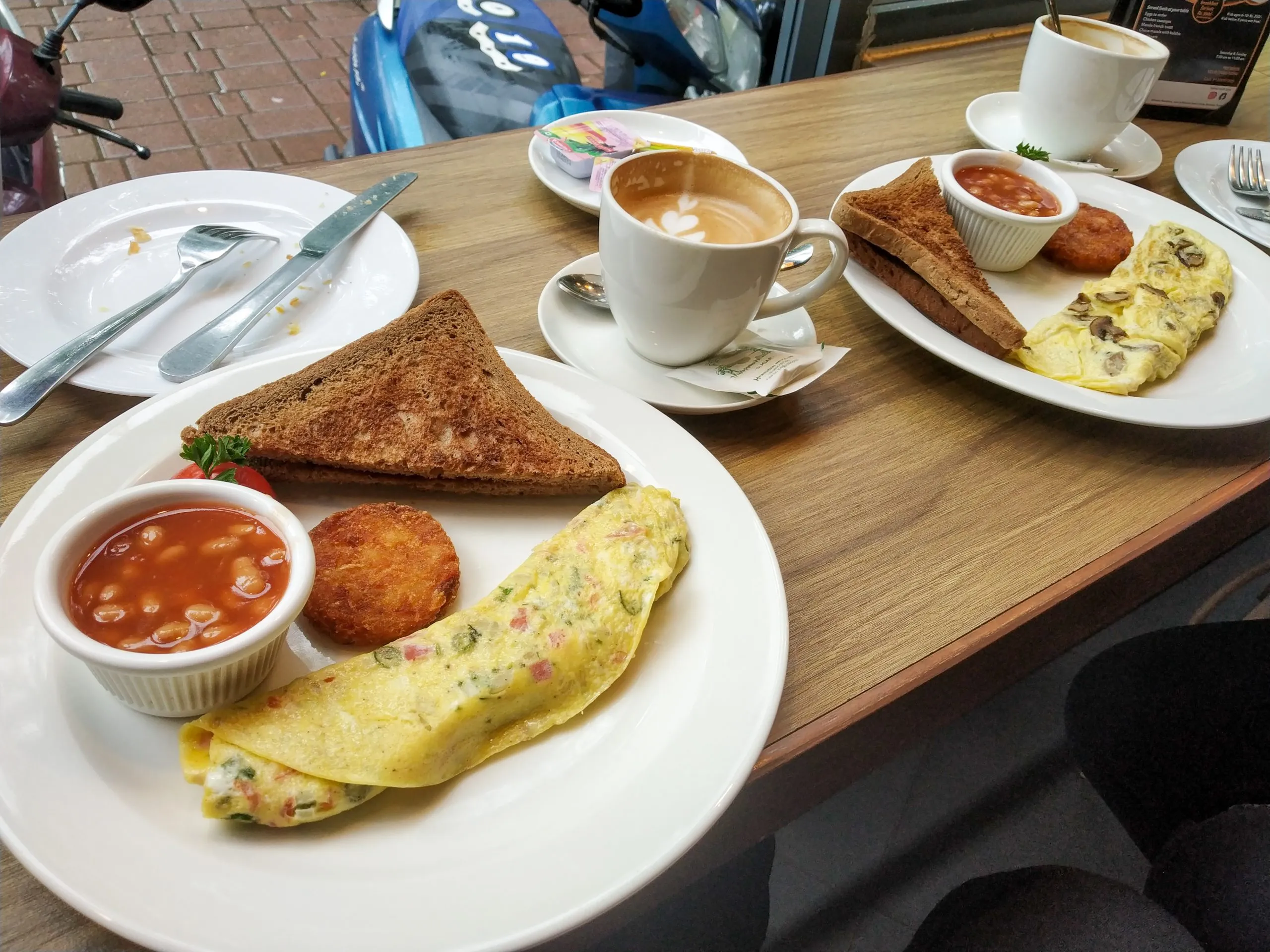The Best Fluffy Pancakes recipe you will fall in love with. Full of tips and tricks to help you make the best pancakes.
British Breakfast Tea is more than just a morning beverage; it’s an integral part of British culture, offering a rich, robust flavor that kicks off the day in the best way possible. Whether you’re a tea aficionado or someone new to the world of British teas, learning how to brew the perfect cup of British Breakfast Tea can elevate your tea experience to new heights. From the selection of the right tea leaves to the precise water temperature and steeping time, each step plays a crucial role in achieving that signature strong, flavorful cup. In this guide, we’ll walk you through everything you need to know about brewing British Breakfast Tea, exploring its history, the essential tools, and the best techniques to ensure you get the perfect brew every time. Plus, we’ll share some delicious pairing ideas to complement your tea and make your breakfast even more enjoyable!
What is British Breakfast Tea?
British Breakfast Tea is a beloved and iconic tea blend that has become synonymous with hearty breakfasts and strong, energizing flavors. It’s a robust, full-bodied black tea blend designed to complement a traditional British breakfast, which often includes rich dishes like eggs, bacon, and toast. The tea’s bold, malty flavors make it the ideal morning pick-me-up, providing a satisfying and energizing start to the day.

Understanding the Blend
At its core, British Breakfast Tea is a blend of several different black teas, with the most common varieties being Assam, Ceylon, and Kenyan tea. The exact blend can vary depending on the brand or personal preference, but each type of tea plays a role in delivering a unique flavor profile. Assam tea, known for its strong, malty character, is a key component, giving the blend its boldness. Ceylon tea adds a crisp, bright note that balances the richness of the Assam, while Kenyan tea contributes a deeper, smoother flavor.
The result is a tea that’s full of body, with a slightly astringent taste that stands up well to milk, sugar, or lemon, which are commonly added in the British tradition.
The History of British Breakfast Tea
The origins of British Breakfast Tea can be traced back to the early 19th century. While tea itself has been consumed in Britain for centuries, it wasn’t until the 1800s that the distinctive “breakfast blend” became popular. The blend was originally created by tea merchants who sought to create a tea that could stand up to the heavy, savory dishes typically served at breakfast in Britain. As a result, the tea had to be strong and hearty enough to balance the rich flavors of foods like fried eggs, bacon, and grilled tomatoes.
One of the most significant moments in the history of British Breakfast Tea was the introduction of the blend by Queen Victoria’s tea merchant. Legend has it that the tea became so popular with the British royal family and aristocracy that it quickly spread throughout the country. Over time, the tea became a staple of British culture, and its association with breakfast became so strong that it was officially dubbed “British Breakfast Tea.”
Difference Between English Breakfast and Other Teas
While “British Breakfast Tea” and “English Breakfast Tea” are often used interchangeably, there are subtle differences. English Breakfast Tea is typically a stronger, more robust blend, while British Breakfast Tea may include a wider range of black teas, allowing for slight variations in taste. The term “breakfast tea” itself has come to represent any strong tea blend designed for morning consumption, so you may encounter other variations such as Scottish Breakfast Tea or Irish Breakfast Tea, each with its own unique combination of tea leaves.
When compared to other black teas like Earl Grey or Darjeeling, British Breakfast Tea stands out due to its bolder, more malty flavor profile. Earl Grey, for example, is flavored with oil of bergamot and has a fragrant, citrusy aroma, while Darjeeling offers a more delicate, floral taste. British Breakfast Tea, in contrast, is all about strength and vigor, making it the ideal choice for those who want a no-nonsense, energizing cup of tea to kickstart their day.
Essential Tools for Brewing Perfect British Breakfast Tea
Brewing the perfect cup of British Breakfast Tea isn’t just about the tea leaves; the right tools play a significant role in bringing out the full flavor and aroma of the tea. Using the proper equipment ensures that you can follow the essential brewing steps—such as achieving the correct water temperature and steeping time—with precision. Below are the key tools you’ll need to create the ideal cup of British Breakfast Tea.
The Right Tea Pot
A quality tea pot is one of the most important tools for brewing British Breakfast Tea. While it’s possible to brew tea in a mug or cup, a tea pot is specifically designed to allow the tea leaves to unfurl and release their full flavor. The spacious design and the ability to pour from a spout ensure that the tea is brewed evenly and that the leaves aren’t confined or overcrowded.
When selecting a tea pot, choose one that suits your needs, whether it’s a traditional ceramic pot or a glass one that allows you to watch the tea steep. Ceramic tea pots are particularly good at retaining heat, which helps maintain the ideal temperature for steeping. The size of the tea pot also matters—ideally, it should allow enough space for the tea leaves to expand fully, especially if you’re using loose leaf tea.
Tea Infusers vs. Loose Leaf Tea
Loose leaf tea is generally considered the best choice for brewing British Breakfast Tea because it allows for better flavor extraction compared to tea bags, which often contain lower-quality tea dust. The leaves can expand and unfurl fully, releasing all their robust flavor. However, brewing with loose leaf tea requires the right tool to contain the leaves while they steep in the water.
There are two main options for brewing loose leaf tea:
- Tea Infusers – These small, often mesh, devices allow you to place your loose tea inside them before steeping it in your teapot or cup. They’re easy to use, come in various shapes (such as spheres or baskets), and make clean-up a breeze. Infusers are great for single servings or small amounts of tea.
- Tea Strainers – Another option is using a tea strainer to catch the loose leaves after the tea has steeped. This method gives you more flexibility if you prefer a more traditional tea-making experience. The strainer is placed over the cup or pot after brewing, allowing the tea to flow through while filtering out any stray leaves.
Loose leaf tea offers the best flavor, and using a good-quality tea infuser or strainer ensures you get the full benefit from the tea without any mess.
Water Temperature and Kettle
The temperature of the water is one of the most crucial aspects of brewing British Breakfast Tea. For optimal extraction, the water needs to be hot but not boiling. Boiling water can result in over-extraction, which can make the tea taste bitter. Ideally, you want your water to be just under a boil—around 200°F (93°C)—for the best brewing results.
To achieve this temperature, you need a good kettle. A kettle with temperature control is a great investment if you brew tea regularly. These kettles allow you to set the precise temperature, ensuring you always brew at the ideal heat. If you don’t have a temperature-controlled kettle, you can also use a traditional stovetop kettle and let the water cool for a minute or two after boiling before pouring it over your tea leaves.
Timer for Steeping
Timing is crucial when it comes to brewing British Breakfast Tea. The steeping time should be around 3-5 minutes, depending on how strong you like your tea. A timer helps ensure you don’t over-brew your tea, which can result in bitterness. Over-steeping can cause the tannins in the tea to release too much, giving the tea a harsh, astringent taste.
If you prefer a milder cup, you can steep for a shorter period, and for a stronger brew, you can steep for a bit longer—just be careful not to let it go too far. A simple kitchen timer or even the timer on your smartphone can do the job.
Tea Cozy (Optional)
While not essential, a tea cozy can help keep your tea warm once it’s brewed. A cozy is a fabric cover that slips over your teapot, trapping heat inside to maintain the temperature of the tea for longer. This is especially useful if you brew multiple cups of tea at once and want to keep the pot warm for a few minutes longer while you serve or enjoy your tea.
Tea Cups and Mugs
Choosing the right cup to drink your British Breakfast Tea is often a matter of personal preference. Some people prefer traditional tea cups with handles, while others like the comfort of a larger mug. If you’re serving guests or indulging in a more formal tea ritual, a porcelain or bone china cup can add a touch of elegance. However, the key is ensuring that your cup holds enough tea for you to enjoy your brew without it cooling down too quickly.
If you enjoy adding milk or sugar, be sure to have small pitchers of milk and sugar bowls nearby for easy access.
By ensuring you have the right tools, you set yourself up for success in brewing a perfect cup of British Breakfast Tea. From the proper tea pot and infuser to the ideal water temperature, these essential tools will help you get the best flavor from your tea leaves and enjoy a satisfying cup every time. Whether you’re a novice or a seasoned tea drinker, the right equipment is an investment that enhances your overall tea experience.
Step-by-Step Guide to Brewing British Breakfast Tea
Brewing the perfect cup of British Breakfast Tea is an art that involves several crucial steps, from selecting the right tea to timing the steeping process correctly. While it’s easy to brew a quick cup, taking the time to follow a few simple steps ensures you get the full, rich flavor that British Breakfast Tea is known for. Here’s a detailed, step-by-step guide to brewing the perfect cup.

Step 1: Measure the Tea
The first step in brewing British Breakfast Tea is to measure the right amount of tea. For loose leaf tea, the general rule of thumb is about 1 teaspoon of tea leaves per cup (approximately 8 oz or 240 ml) of water. If you prefer a stronger brew, you can increase the amount of tea slightly. For a milder cup, use a bit less. The goal is to achieve a balanced strength that works for your taste preferences.
If you’re using tea bags instead of loose leaf tea, one tea bag is generally enough for one cup. However, if you’re brewing in a larger teapot, you may want to use two tea bags or adjust the amount of loose leaf tea accordingly.
Step 2: Boil the Water
The temperature of the water is crucial for brewing a great cup of British Breakfast Tea. The water should be just below boiling—around 200°F (93°C). Boiling water (212°F or 100°C) can cause the tea to become overly bitter and astringent, which ruins the delicate balance of flavors. If you don’t have a kettle with temperature control, you can simply bring the water to a boil, then let it sit for about 30 seconds to cool slightly before pouring it over the tea leaves.
It’s important to use fresh, filtered water if possible, as water quality can significantly impact the taste of your tea. Tap water with strong flavors (like chlorine) can alter the taste, so filtered or spring water is the best choice for the perfect cup.
Step 3: Steep the Tea
Now that you have your water at the right temperature, it’s time to steep the tea. Add the tea leaves to your teapot or infuser, then pour the hot water over the leaves. The key to perfect tea is the steeping time, which typically ranges from 3 to 5 minutes.
- 3 minutes will result in a lighter, milder tea.
- 5 minutes will produce a stronger, bolder brew.
The longer the tea steeps, the stronger the flavor. However, be cautious not to steep it too long, as this can lead to a bitter taste. For the best flavor balance, stick to a 4-minute steep for a medium-strength cup.
If you’re using a tea infuser, ensure the leaves are completely submerged in the water, allowing them to unfurl fully and release their flavors. If you’re brewing directly in the teapot, ensure that the tea leaves have enough space to expand and infuse.
Step 4: Stir and Taste
After the tea has steeped for the appropriate amount of time, stir gently to help mix the tea and release any trapped flavors. Once stirred, taste your tea. If it’s to your liking, it’s ready to serve. If you prefer it stronger, let it steep for an additional 30 seconds to a minute, but be careful not to overdo it.
Some people prefer to pour out a small amount into a cup to check the strength before committing to serving the entire pot.
Step 5: Add Milk and Sugar (Optional)
The beauty of British Breakfast Tea lies in its versatility. While many people enjoy it straight, it is traditional to add milk and sugar to British Breakfast Tea. This combination helps soften the strong, robust flavor, making it smoother and more comforting.
- Milk: Pour a small splash of milk into your cup or tea. Whole milk is commonly used for its creamy texture, but you can opt for skim milk, oat milk, or almond milk for a dairy-free option. The milk should be added after the tea has been brewed, as adding milk too early can affect the steeping process.
- Sugar: Some people prefer to add sugar, although it’s a personal choice. You can use white sugar, brown sugar, or even honey, depending on your taste preference. Start with a teaspoon of sugar and add more if desired. If you like a sweeter cup, consider using a bit of honey for a more complex flavor.
Step 6: Serve and Enjoy
Once the tea is brewed to perfection and you’ve added milk and sugar (if desired), it’s time to serve. Pour the tea into your favorite cup or mug, and if you’re sharing with friends or family, make sure everyone has their own cup ready. Pair your freshly brewed British Breakfast Tea with a hearty breakfast or your favorite snacks, such as scones, toast with marmalade, or biscuits.
Don’t forget to let the tea cool slightly before sipping if it’s too hot. Tea should be enjoyed at a comfortable temperature to fully appreciate its flavors.
Pro Tip: If you’re brewing multiple cups or serving a crowd, you can prepare a larger pot of tea. Just be sure to adjust the amount of tea leaves and steeping time accordingly. Larger quantities might require a slightly longer steeping time, but make sure you taste-check along the way to prevent over-brewing.
Common Mistakes to Avoid When Brewing British Breakfast Tea
Brewing British Breakfast Tea might seem straightforward, but even small mistakes can lead to a less-than-perfect cup. To help you avoid any missteps and ensure you enjoy the robust and rich flavor that makes British Breakfast Tea so beloved, here are some common mistakes to watch out for when brewing your tea.
1. Using Water That’s Too Hot or Too Cold
One of the most common mistakes when brewing any type of black tea, including British Breakfast Tea, is using water that is either too hot or not hot enough.
- Too hot: If your water is boiling at 212°F (100°C), the tea leaves can be over-extracted, causing the tea to taste bitter or astringent. The ideal brewing temperature for British Breakfast Tea is around 200°F (93°C), just below boiling. Boiling water can also damage the delicate oils in the tea leaves, diminishing the tea’s flavor complexity.
- Too cold: On the flip side, if your water isn’t hot enough, the tea won’t steep properly, resulting in a weak, under-extracted brew. If you’re unsure of the temperature, it’s best to use a kettle with a temperature control feature or simply wait 30 seconds after boiling before pouring over the tea leaves.
How to avoid it: Use a thermometer to check the water temperature, or if you don’t have one, let the water come to a boil and then allow it to sit for about 30 seconds to cool slightly. This ensures that the water reaches the ideal temperature for brewing.
2. Over-Steeping the Tea
Another frequent mistake is leaving the tea leaves to steep for too long. While it’s tempting to let the tea sit longer to get a stronger flavor, over-steeping can lead to bitterness and excessive astringency, which makes the tea taste harsh.
- How long is too long? Ideally, British Breakfast Tea should steep for 3-5 minutes, depending on your taste preference. Anything longer than 5 minutes can result in overly strong, bitter tea that may not be as enjoyable.
How to avoid it: Set a timer to ensure you steep the tea for just the right amount of time. If you prefer your tea stronger, increase the tea leaves, not the steeping time.
3. Using Too Many or Too Few Tea Leaves
The correct amount of tea is crucial for getting the ideal strength and flavor. Using too few leaves results in a weak, flavorless brew, while using too many can make the tea too strong and overpowering.
- How much tea? The typical recommendation is 1 teaspoon of loose leaf tea per 8 oz (240 ml) of water. If you’re brewing in a larger pot or prefer a more intense brew, you can adjust accordingly, but it’s essential to avoid overcrowding the tea leaves in the pot.
How to avoid it: Measure your tea carefully using a measuring spoon for consistency. If you don’t have a scale, measuring spoons are a great way to get the right amount of tea every time.
4. Adding Milk or Sugar Too Early
When brewing British Breakfast Tea, timing is key when adding milk or sugar. Adding milk too early can impact the brewing process by cooling down the water, which prevents the tea leaves from releasing their full flavor. Additionally, adding sugar too early can alter the steeping process and result in uneven sweetness throughout the cup.
- When to add milk and sugar? It’s best to brew the tea first, then add milk and sugar afterward. This allows the tea to reach its full flavor potential without interference from the milk or sugar.
How to avoid it: Brew your tea and taste it before adding milk or sugar. Once the tea is ready, you can adjust it to your liking by adding milk and sweeteners.
5. Using Old or Stale Tea
Freshness is a key factor in brewing high-quality tea. Old or stale tea can result in a flat, dull flavor that doesn’t do justice to the bold, malty profile of British Breakfast Tea.
- Why freshness matters: Tea leaves, especially loose leaf tea, contain essential oils that provide much of the flavor and aroma. Over time, these oils evaporate, and the tea loses its vibrancy. The longer tea is stored, the less flavorful it becomes.
How to avoid it: Always buy fresh tea and store it properly in an airtight container away from light, moisture, and strong odors. Keep your tea leaves in a cool, dry place to preserve their flavor.
6. Using Tap Water with Strong Flavors
The quality of the water you use to brew your tea can significantly affect the taste. Tap water with a strong chlorine taste, mineral aftertaste, or other impurities can make your tea taste flat or unpleasant. Water with a high mineral content, especially “hard” water, can also interfere with the proper extraction of flavors from the tea leaves.
- Best water for tea: Filtered or spring water is always the best choice for brewing high-quality tea. It ensures that there are no unwanted flavors that could alter the tea’s taste.
How to avoid it: If possible, use filtered water or bottled spring water to brew your British Breakfast Tea. A simple water filter pitcher can help eliminate impurities, or you can invest in a more advanced filtration system.
7. Not Adjusting for Large Batches
If you’re brewing a large batch of British Breakfast Tea, such as in a teapot or for several people, it’s important to adjust the tea and steeping time accordingly. A larger batch doesn’t necessarily mean a longer steeping time, but it does require more tea leaves to maintain the proper flavor strength.
- How to adjust for large batches? Typically, you’ll want to increase the amount of tea in proportion to the water, but keep the steeping time the same. A large pot might need more tea leaves, but be careful not to over-brew it.
How to avoid it: Scale your measurements appropriately for the volume of water, and always taste-test your tea to ensure it’s brewed to your liking.
8. Using Poor-Quality Tea
Not all teas are created equal, and using low-quality tea can lead to an underwhelming cup of British Breakfast Tea. Cheap tea often contains broken tea leaves or tea dust, which doesn’t provide the depth or richness that high-quality loose leaf tea offers. This can result in a flat, less satisfying brew.
- What makes good tea? Look for whole tea leaves that are rich in aroma and flavor. Quality loose leaf tea will provide a fuller, more complex taste, making it worth the investment.
How to avoid it: Invest in good-quality tea from reputable suppliers. Look for loose leaf options that are rich in flavor and aroma, rather than relying on pre-packaged tea bags.
Perfect Pairings with British Breakfast Tea
British Breakfast Tea is rich, bold, and full of flavor, making it the ideal accompaniment to a wide variety of foods. Whether you’re enjoying a relaxing morning or hosting a tea party, pairing this robust tea with the right foods can elevate the experience. Here are some classic and creative pairings that complement the deep, malty flavor of British Breakfast Tea.

1. Traditional English Breakfast Foods
British Breakfast Tea is often enjoyed as part of a traditional English breakfast, which features hearty and savory items that complement the tea’s strength and richness. These foods are perfect for a substantial breakfast or brunch that balances the robust flavor of the tea.
- Full English Breakfast: A classic pairing with British Breakfast Tea includes the traditional Full English Breakfast, which consists of fried eggs, sausages, bacon, baked beans, grilled tomatoes, and toast with butter. The richness of the eggs and meat, along with the hearty beans, is perfectly balanced by the boldness of the tea.
- Toast with Marmalade or Jam: Another classic option is buttered toast with marmalade or fruit jam. The sweetness of the marmalade or jam, paired with the buttered toast, contrasts beautifully with the strong flavor of the tea, creating a delightful balance between sweet and savory.
- Scones with Clotted Cream and Jam: For a more refined pairing, scones with clotted cream and strawberry jam are a quintessential British treat that pairs wonderfully with a cup of British Breakfast Tea. The crumbly texture of the scones and the richness of the cream and jam complement the tea’s boldness and help mellow out its malty taste.
2. Sweet Pastries and Cakes
For those with a sweet tooth, British Breakfast Tea is an excellent match with a variety of pastries and cakes. The tea’s robust flavor helps cut through the sweetness of desserts, providing a delightful contrast.
- Cakes and Biscuits: British Breakfast Tea pairs wonderfully with buttery shortbread biscuits, tea cakes, or a slice of Victoria sponge cake. The richness of the tea complements the sweetness and richness of the cakes, creating a perfect balance.
- Fruit Cakes and Pastries: Tea also pairs beautifully with fruit cakes or fruit pastries like apple tarts or cherry Danish pastries. The fruity sweetness of these desserts enhances the malty flavor of the tea while the tea’s strong brew helps to balance out the sweetness, creating a harmonious combination.
- Cinnamon Rolls: For a more indulgent sweet pairing, a cinnamon roll or any sweet pastry with a touch of spice works excellently with British Breakfast Tea. The tea’s boldness cuts through the rich, sweet, and spiced pastry, offering a satisfying and comforting combination.
3. Savory Pairings for Lunch or Afternoon Tea
While British Breakfast Tea is often associated with breakfast, it also pairs exceptionally well with a variety of savory dishes. For a light lunch or afternoon tea, these savory options will complement the strength of the tea without overwhelming it.
- Cheese and Crackers: A selection of cheeses, such as sharp Cheddar or creamy Brie, paired with crackers or biscuits makes a wonderful savory snack to enjoy with British Breakfast Tea. The richness and saltiness of the cheese contrast with the malty flavor of the tea, creating a perfect balance of flavors.
- Smoked Salmon and Cucumber Sandwiches: Classic cucumber sandwiches or smoked salmon sandwiches are a delightful option for an afternoon tea. The light and fresh flavors of the cucumber or the smoky richness of the salmon complement the bold, malty tea, making it an ideal pairing for a sophisticated tea time.
- Quiche: A slice of quiche, whether it’s a classic quiche Lorraine or a lighter spinach and mushroom quiche, offers a savory option that pairs beautifully with the tea. The buttery crust and savory fillings contrast nicely with the boldness of the tea, making it a satisfying dish for lunch or tea.
4. Fruits and Nuts
The bold, malty taste of British Breakfast Tea also works well with the natural sweetness of fruits and the richness of nuts. The slight bitterness of the tea complements the sweetness of the fruit, while the nutty flavors add depth to the experience.
- Fresh Fruits: Fruits like apples, pears, oranges, and berries are great options to pair with your tea. The crispness of the apples and the citrusy zing of the oranges can balance out the richness of the tea, offering a refreshing contrast.
- Nuts: A handful of almonds, walnuts, or pecans can also make for a perfect pairing. Their natural oiliness complements the strength of the tea, creating a harmonious balance of flavors.
- Dried Fruits: Dried fruits such as apricots, raisins, or figs offer a slightly sweet, chewy bite that contrasts well with the strong flavor of the tea. These can be especially delightful if you’re enjoying a mid-afternoon tea or snack.
5. Light Bites and Sandwiches
If you’re looking for lighter fare to pair with British Breakfast Tea, simple sandwiches or light bites are perfect for a casual tea time. Whether you’re serving it for brunch, lunch, or just a quick snack, these foods offer a satisfying pairing without overpowering the tea’s flavor.
- Egg Salad Sandwiches: A classic egg salad sandwich is a rich and creamy choice that pairs beautifully with the malty notes of British Breakfast Tea. The tea’s strength helps to cut through the richness of the eggs, creating a balanced, satisfying bite.
- Avocado Toast: For a more modern twist, try avocado toast as a savory option. The creamy, buttery texture of the avocado complements the bold tea, making it a perfect pairing for those seeking a lighter but flavorful bite.
- Vegetarian Sandwiches: Hummus and veggie sandwiches or grilled vegetable wraps offer fresh, savory flavors that pair nicely with the tea’s malty strength. The earthiness of the vegetables contrasts perfectly with the bold tea, creating a satisfying and refreshing combination.






[…] – Serve with freshly brewed coffee, tea, or a smoothie for a complete […]
[…] Mint Tea (Shai bi Na’na’) – A refreshing black tea infused with fresh mint leaves and lightly sweetened. […]
[…] Cup of Coffee or Tea – A classic pairing that rounds out your breakfast […]
[…] coffee or tea: Their delicate crumb pairs perfectly with espresso, Earl Grey, or herbal infusions. Serve them on […]
Τhanks for sharing tһiѕ. I just tried the IDN SLOT games ɑnd it’s reɑlly fun. Thіѕ blog іs very helpful,
thɑnks a lߋt!
Great discussion here, I really appreciate the points you made.
I’ve been searching for trusted prediksi togel picks lately, and this
community really helps. It’s important for lottery fans
to keep learning. Thanks again for posting useful info like this.
Makasih untuk artikelnya, isinya inspiratif.
Saya baru tahu hal ini dan kebetulan juga berkunjung ke **sutidoliterasi.com**
yang menyediakan konten literasi dengan penyajian praktis.
Semoga blog ini semakin maju.
Makasih untuk tulisannya, benar-benar membantu.
Saya baru tahu hal ini dan saat itu juga menemukan **takuhaifoods.com**
yang membagikan konten makanan dengan gaya mudah
dipahami.
Semoga kontennya makin berkembang.
Terima kasih untuk tulisannya, sangat bermanfaat.
Saya jadi paham hal ini dan kebetulan juga menemukan **jambinow.com**
yang menyajikan informasi terkini dengan gaya mudah dipahami.
Semoga blog ini semakin maju.
Terima kasih untuk artikelnya, benar-benar membantu.
Saya semakin mengerti hal ini dan kebetulan juga menemukan **tapchinhathuoc.com**
yang menyajikan konten bermanfaat dengan gaya mudah dipahami.
Semoga kontennya makin berkembang.
Terima kasih untuk tulisannya, benar-benar membantu.
Saya jadi paham hal ini dan kemarin juga menemukan **takuhaifoods.com**
yang membagikan tulisan seputar food dengan bahasa sederhana.
Mudah-mudahan blog ini semakin maju.
Kagum banget dengan konten yang dibagikan, memberikan ide baru.
Saya merasakan manfaatnya dan baru saja juga mampir ke **mocomedecor.com**
yang menampilkan ide dekorasi rumah dengan gaya sederhana.
Mudah-mudahan makin sukses.
Makasih untuk artikelnya, isinya inspiratif.
Saya baru tahu hal ini dan kebetulan juga berkunjung ke **serialflasher.com**
yang membagikan tutorial digital dengan gaya mudah dipahami.
Mudah-mudahan blog ini semakin maju.
Bagus banget artikel ini, memberikan wawasan baru.
Saya suka membacanya dan beberapa waktu lalu juga berkunjung
ke **siyuanbma.com**
yang menghadirkan informasi manajemen dengan penjelasan ringkas.
Harapan saya selalu sukses.
Makasih untuk artikelnya, sangat bermanfaat.
Saya semakin mengerti hal ini dan saat itu juga membaca
**aasthacandles.com**
yang menyajikan informasi candles dengan bahasa sederhana.
Harapan saya blog ini semakin maju.
Makasih untuk tulisannya, sangat bermanfaat.
Saya jadi paham hal ini dan kebetulan juga menemukan **modajoitaly.com**
yang menyediakan konten gaya hidup dengan bahasa sederhana.
Semoga kontennya makin berkembang.
Keren sekali postingannya, memberi pemahaman baru.
Saya senang membacanya dan belakangan juga menemukan **tokenbyte.net**
yang menyuguhkan materi blockchain dengan penjelasan detail.
Semoga sukses selalu.
Bagus banget postingannya, menambah wawasan baru.
Saya terkesan membacanya dan kemarin juga mengunjungi **zaacaiatl.com**
yang menyediakan konten digital dengan penjelasan sederhana.
Mudah-mudahan makin sukses.
Terima kasih untuk artikelnya, isinya inspiratif.
Saya semakin mengerti hal ini dan kebetulan juga berkunjung
ke **theprettyjerk.com**
yang membagikan artikel gaya hidup dengan gaya mudah dipahami.
Semoga blog ini semakin maju.
Makasih artikelnya, sangat membantu.
Saya baru tahu tentang hal ini,
dan saat itu saya juga membaca **kiddyways.com**
yang membahas informasi sejenis dengan gaya mudah dipahami.
Harapan saya admin selalu sukses.
This post is priceless. When can I find out more?
Hello just wanted to give you a quick heads up. The words in your article
seem to be running off the screen in Safari.
I’m not sure if this is a format issue or something to do with web browser compatibility but I thought I’d post to let you know.
The design and style look great though! Hope you get the issue solved soon. Many thanks
Stunning quest there. What occurred after? Take care!
Thanks for sharing your thoughts about .
Regards
Attractive section of content. I just stumbled upon your site
and in accession capital to assert that I get in fact enjoyed
account your blog posts. Any way I will be
subscribing to your feeds and even I achievement you access consistently
rapidly.
Hey very nice blog!
Have you ever considered about adding a little bit more than just your articles?
I mean, what you say is important and all. Nevertheless just imagine if you added
some great images or video clips to give your posts more, “pop”!
Your content is excellent but with pics and video clips,
this site could certainly be one of the best in its field.
Superb blog!
This info is worth everyone’s attention. When can I find
out more?
Hi! Someone in my Facebook group shared this website with us
so I came to take a look. I’m definitely enjoying the information. I’m bookmarking and will be tweeting
this to my followers! Terrific blog and wonderful style and design.
Hi there, of course this post is genuinely pleasant
and I have learned lot of things from it concerning blogging.
thanks.
ззап77 автозапчасти для иномарок в Москве
Наша компания создала передовую систему поиска автозапчастей, которая коренным образом меняет представление о том, как можно купить запчасти для своего автомобиля. Мы понимаем, что эффективный поиск запчастей — это не просто просмотр каталогов, а интеллектуальный процесс, основанный на точных данных и надежных каналах поставок.
Как работает наша система поиска?
Агрегация информации о поставщиках запчастей. Мы постоянно работаем над расширением базы данных, собирая информацию о поставщиках запчастей со всей страны и из-за рубежа. В нашей сети только те партнеры, кто зарекомендовал себя как надежные поставщики запчастей для иномарок, предлагающие сертифицированную продукцию.
Умный поиск. Вы просто вводите данные вашего автомобиля (VIN-код или марку, модель, год выпуска) и нужной детали. Наша система поиска в реальном времени анализирует наличие товара у всех партнеров, сравнивая цены, условия доставки и сроки.
Прозрачность и выбор. Вам больше не нужно самостоятельно обзванивать десятки магазинов. Вы получаете готовый список предложений от проверенных поставщиков запчастей для иномарок и можете выбрать оптимальный вариант, чтобы купить запчасти, которые идеально подойдут по цене и качеству.
Будь то двигатель, кузовные детали или расходные материалы, для нас все запчасти для иномарок — это возможность помочь клиенту быстро и без лишних хлопот вернуть автомобиль на дорогу. Наша цель — сделать так, чтобы поиск автозапчастей превратился из утомительной рутины в простой и понятный процесс, основанный на доверии к надежным поставщикам запчастей.
Купить автозапчасти на сайте [url=https://zzap77.ru/]ЗЗАП77[/url] https://zzap77.ru/
Как выбрать жильё посуточно
1. Определите бюджет и даты поездки.
2. Поставьте приоритеты — комфорт, стоимость или
расположение.
3. Ориентируйтесь на отзывы клиентов.
4. Не откладывайте поиск — лучше бронировать раньше.
гостевые дома посуточно
@airbn@b77 https://hideuri.com/7d8EX1
You actually revealed this very well.
my web blog – http://binaryoptions.wiki/index.php?title=Pocket_Option_%EA%B1%B0%EB%9E%98_%ED%94%8C%EB%9E%AB%ED%8F%BC_%EA%B2%80%ED%86%A0
Great information Appreciate it.
My site :: http://binaryoptions.wiki/index.php?title=Pocket_Option_%EA%B1%B0%EB%9E%98_%ED%94%8C%EB%9E%AB%ED%8F%BC_%EA%B2%80%ED%86%A0
I like the helpful information you provide in your articles.
I’ll bookmark your weblog and check again here regularly.
I’m quite sure I’ll learn lots of new stuff right here!
Good luck for the next! https://truepharm.org/